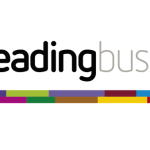Transport Focus has held workshops to find out how operators can make using the bus easier for 16-18-year-olds. It has published recommendations for making it ‘as simple as ordering pizza’
Young people use the bus more than any other group of people, yet they’re the least satisfied with bus services.
That’s the paradox addressed by independent watchdog Transport Focus as it launches a new best practice guide designed to help bus operators and local authorities (LAs) better serve the under-19s.
David Sidebottom, Transport Focus Director, says: “Young people want using the bus to be as simple and intuitive as ordering pizza. Bus operators and local authorities must seize the opportunity to cater for their customers of the future.”
‘Making Bus a Better Choice for Young People’ reports on five workshops Transport Focus carried out earlier this year to learn what young people want.
Key recommendations
Taking place in Birmingham. Colchester, Exeter, Oxford and York, the five workshops brought young bus users together with bus operators, LAs, bus manufacturers and transport consultants to explore ways to make buses better for teenagers.
The workshops examined existing schemes as case studies.
They included:
- West Yorkshire – half-price fare for passengers wearing school uniform
- Liverpool City Region – a simple flat fare for under-19s
- West Midlands – half-price travel for apprentices and trainees.
From the workshops, Transport Focus has made plenty of recommendations in its report, emphasising these three in particular:
- Smart fares – discounted fares for 16 to 18-year olds that are easy to buy and understand
- One-stop nationwide bus app – one central source for information and ticketing provided by the bus industry that is intuitive, easy-to-use and accessed via an app that will earn its place on a young person’s phone
- Better on board – wi-fi and USB charge points at every seat.
More you can do
It also advises bus operators and LAs around the following areas:
- Interaction with the driver – including driver attitude, better customer service training, and providing some degree of automated ticket purchase
- Tickets and fares – including payment options and technology, fare zones, discounts and easily accessible ticket prices
- Information provision – including real time information and personalisation towards young people
- Communication and engagement – including tone of voice and language, targeted social media posts, and using a peer-to-peer approach to influence
- The experience on board – including asking young people what they want to do on the bus and designing buses around that, plus cleanliness and security
- Bus operators working in partnership – including working with businesses that also target young people such as shops and cinemas to offer incentives, creating relationships with schools and colleges, and organising forums
- Keeping young passengers so they’re still using the buses in 10 years – including getting the basics right, engaging and innovating
- Attracting new bus users – including promotion, improving the bus’s image, and keeping bus travel simple.
‘More confidence’
Buses Minister Nusrat Ghani says: “Young people take the bus more often than any other age group, so this Transport Focus research is vital in showing how to encourage them to continue to use buses in the future – both councils and bus companies should follow this best practice.
“We’re also funding a new open data platform so companies can develop apps to help passengers find out where their bus is, how long it will take, and how much it will cost, giving them more confidence to take the bus.”
Graham Vidler, CEO of the Confederation of Passenger Transport, says: “The industry recognises the huge importance of meeting the expectations of younger travellers on services across the country.
“Bus companies continue to invest in services younger passengers expect, and onboard facilities including contactless and mobile ticketing, wi-fi, USB charging points and leather seating are now commonplace on many services.
“The latest satisfaction statistics clearly demonstrate that the industry is moving in the right direction, but of course there is always room for improvement. CPT welcomes this report’s recommendations and looks forward to continuing to work closely with its members, central and local government to further improve the experience of all bus users.”
Darren Shirley, Chief Executive of the Campaign for Better Transport, says: “Increasing young people’s bus use can also reduce traffic on our roads at the busiest times of day as well as making bus services more viable, benefiting us all.
“The report includes encouraging examples of bus operators and local authorities working together to encourage young people to catch the bus. This is something that the Bus Services Act of 2017 can make easier. We want to see more local authorities taking up the powers in the Act.
“We also want to see a National Coach and Bus Investment Strategy that would protect vital bus services and support the greening and modernisation of the bus fleet.”
Find out more
Download the report here
routeone comment
Satisfaction among 16-18-year-old bus passengers is higher than it was – it’s increased from 77% to 80% at the last Bus Passenger Survey.
That’s perhaps a result of operators already pursuing initiatives that are lauded in the new report, such as discounts for under-19s, and wi-fi and USB charging points on buses. Greater consistency of these, plus more partnership work to deliver better information to passengers, should lead to more satisfaction – as well as new apps and journey planning websites enabled by operators publishing their timetables and fares as open data.
It’s well worth reading the report – there are a lot of interesting ideas on a smaller scale that operators can think about taking forward.
























